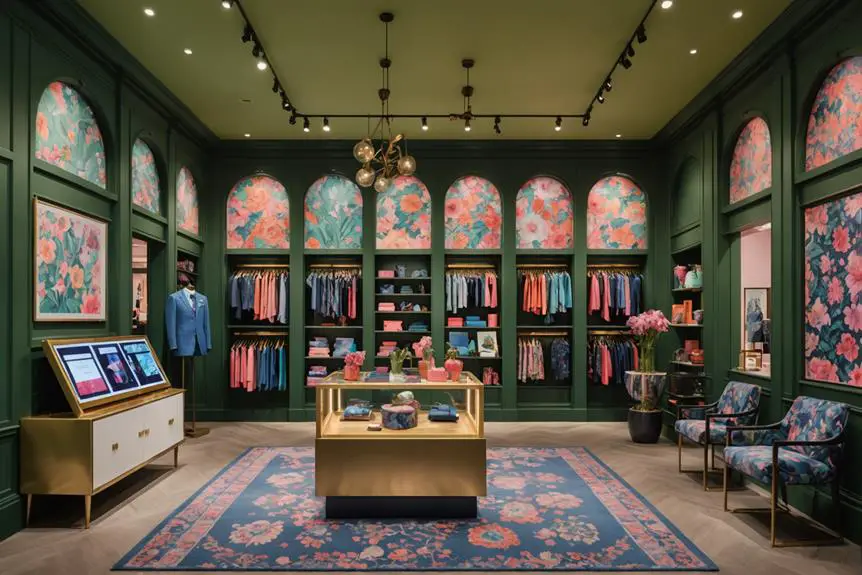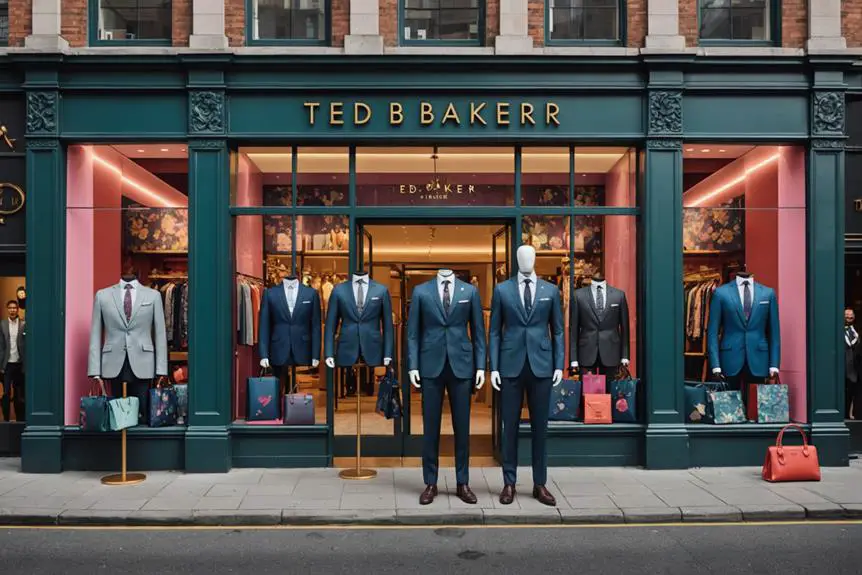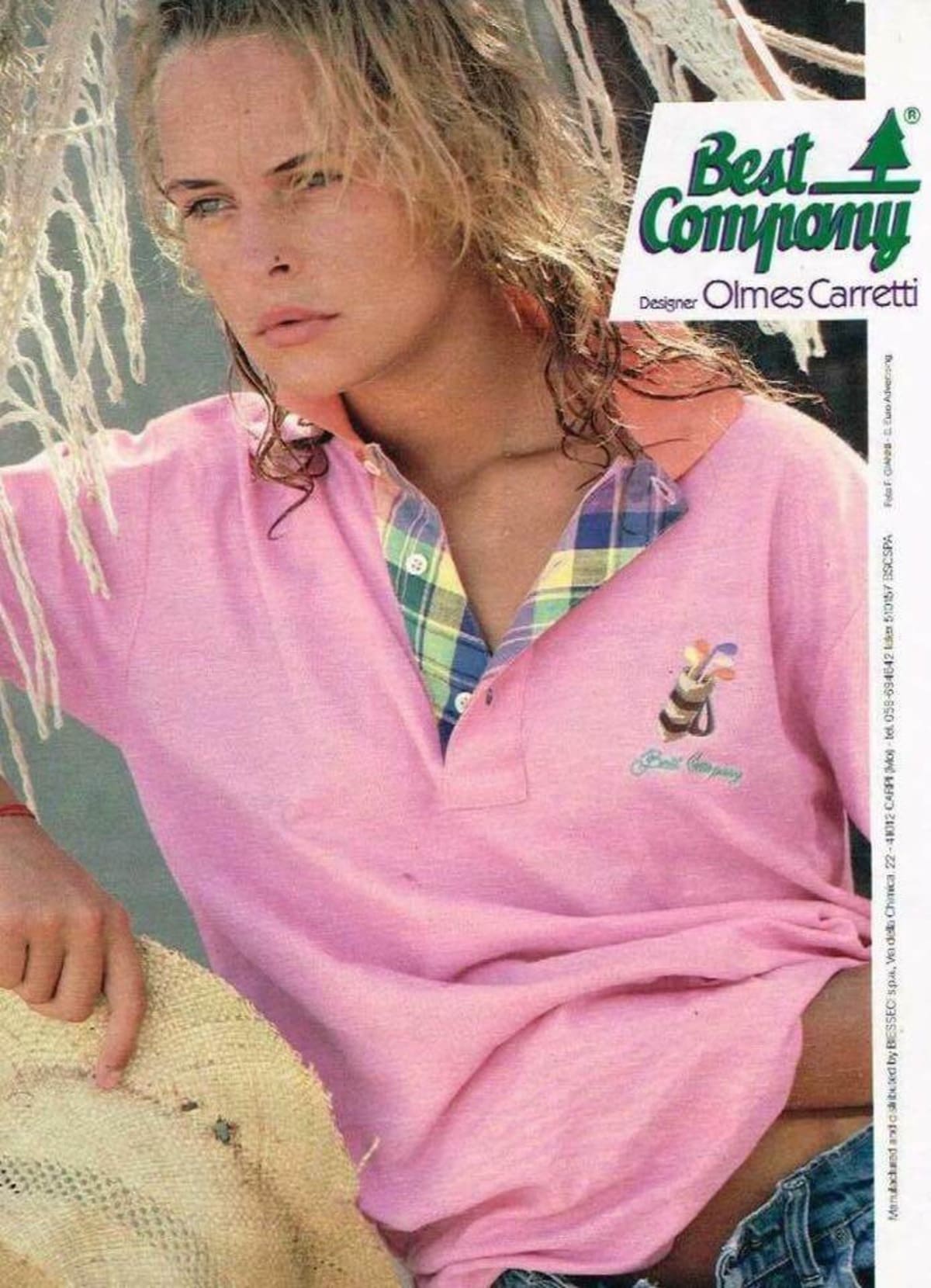You're exploring the history of Ted Baker, a fashion brand established in 1988 by Ray Kelvin in Glasgow. Initially focused on high-quality menswear, it positioned itself as "No Ordinary Designer Label." By 1990, the brand expanded with its first London store in Covent Garden, marking a significant growth phase in the fashion industry. As it diversified, introducing women's lines and personal care products, Ted Baker attracted a broad clientele. However, recent years have brought challenges, including leadership changes and financial struggles, leading to administrative proceedings. The brand's journey illustrates resilience and an evolving identity, hinting at ongoing opportunities for revival within the fashion landscape. Discover the intricacies behind this evolution.
Brand Origins and Foundation

Ted Baker's origins trace back to 1988 when Ray Kelvin launched the brand in Glasgow, Scotland, initially focusing on high-quality menswear, particularly shirts. With a keen eye for detail and a penchant for quirky designs, Kelvin positioned Baker as "No Ordinary Designer Label." This distinctive branding captured the attention of fashion enthusiasts who sought something beyond conventional styles.
The brand's reputation blossomed, leading to its first London store opening in Covent Garden in 1990. This pivotal moment marked a strategic expansion beyond its Scottish roots, establishing a foothold in one of the UK's most vibrant shopping districts. Ted Baker's unique approach resonated with a diverse clientele, setting the stage for further growth.
Early Growth and Expansion
The early growth and expansion of Ted Baker marked a notable turning point for the brand, transforming it from a niche menswear label into a recognized name in the fashion industry. Founded in 1988 in Glasgow, Scotland, Ted Baker initially focused on high-quality shirts for men, carving out a distinct identity in British fashion. In 1990, the brand opened its first store outside Scotland in Covent Garden, London, a strategic move that positioned it in a key retail market and set the stage for further growth.
Product Diversification Strategies

Since its inception, Ted Baker has strategically embraced product diversification to broaden its appeal and capture new markets. Starting with the introduction of the Ted Baker Woman line in 1995, the brand expanded from menswear to target female consumers. This early move set the stage for further diversification.
By 2010, Ted Baker ventured into personal care with its first standalone Grooming Room, showcasing its commitment to this new product category. The launch of a watch collection in 2011 successfully tapped into both men's and women's markets, reinforcing Ted Baker's playful design ethos while enhancing its accessories range.
In 2014, the brand expanded its offerings to include luggage, home fragrance, and audio collections, illustrating a strategic shift into lifestyle products beyond fashion. Additionally, the collaboration with Next for a kidswear range in 2019 exemplified Ted Baker's diversification strategy, appealing to a younger demographic and further expanding its market reach.
- Expansion into women's fashion
- Launch of personal grooming products
- Introduction of a watch collection
- Diversification into lifestyle products
- Kidswear collaboration with Next
Public Offering and Market Entry
With a solid foundation established through product diversification, Ted Baker's journey into public markets marked a pivotal evolution in its business model. In 1997, the brand shifted into a public company, trading as No Ordinary Designer Label Limited. This move came on the heels of its expansion into the USA in 1996, which greatly bolstered its presence in international markets. The timing was strategic; the burgeoning trend of e-commerce was beginning to reshape retail.
Leadership Changes Over Time

Throughout its history, Ted Baker has navigated a tumultuous leadership landscape, particularly in the wake of significant financial challenges. The brand's founder, Ray Kelvin, led the company until his resignation in March 2019 amid harassment allegations. His exit marked the beginning of a shaky shift for the company.
Lindsay Page stepped in as CEO but only lasted until December 2019, as profit warnings and substantial losses plagued the brand. Rachel Osborne then took over as acting CEO, but her leadership also ended in April 2023, primarily due to ongoing financial struggles that the company could not overcome.
This period of instability saw multiple executive resignations, revealing a concerning pattern of turnover that further complicated the brand's recovery efforts. By March 2024, the leadership vacuum contributed to the announcement of Ted Baker entering administration, highlighting the urgent need for stability and direction.
Key points to reflect on:
- Ray Kelvin's long tenure and controversial exit
- Lindsay Page's brief leadership during profit warnings
- Rachel Osborne's challenges in stabilizing the company
- Executive turnover linked to financial issues
- The eventual announcement of administration
Financial Challenges Encountered
Amid shifting market dynamics and internal upheaval, Ted Baker encountered a series of financial challenges that severely impacted its operations. You might recall how the company issued four profit warnings in 2019, largely due to adverse weather conditions and intensified competition. Those warnings culminated in a staggering loss of £23 million within just six months.
Then, in January 2020, an accounting error was discovered, revealing a £58 million deficit that further destabilized Ted Baker's financial situation. As the COVID-19 pandemic took hold in April 2020, the brand took drastic measures, furloughing 75% of its workforce. This move was a direct response to the severe downturn in sales, as the pandemic forced many stores to close.
Fast forward to March 2024, Ted Baker's UK store count plummeted from 192 in 2018 to a mere 86, demonstrating the ongoing struggles to maintain a viable retail presence. By April 2024, Teneo was appointed as administrators, leading to multiple store closures and putting nearly 1,000 jobs at risk. These financial challenges illustrate a brand grappling with significant instability in a rapidly changing market.
Recent Developments and Changes

Steering through a tumultuous period, Ted Baker has faced a significant transformation in its operations. The once-thriving brand, under the leadership of Ray Kelvin, has struggled to maintain its foothold in the competitive fashion landscape. In April 2024, the company's UK operations fell into administration, leading to multiple store closures and putting nearly 1,000 jobs at risk.
- Store count plummeted from 192 in 2018 to just 86 by March 2024.
- Ted Baker Canada filed for creditor protection amid financial instability.
- U.S. operations declared Chapter 15 bankruptcy as struggles intensified.
- The brand's 30-year anniversary in 2018 highlighted its challenges in staying relevant.
- A series of profit warnings and CEO resignations contributed to the crisis.
This series of events illustrates the brand's ongoing financial struggles, marked by a significant leadership shakeup and a desperate need for strategic redirection. With the appointment of Teneo as administrators, Ted Baker is now at a critical juncture, facing the formidable task of reinventing itself while grappling with the realities of a changing retail environment. The future remains uncertain as it seeks to navigate these challenges.
Cultural and Social Influences
As Ted Baker grapples with its recent operational challenges, the brand's cultural and social influences remain an integral part of its identity. Known for its quirky and playful elements, Ted Baker's marketing campaigns have consistently set it apart in the competitive landscape of fashion. These campaigns resonate with consumers, cultivating a loyal following that appreciates the brand's unique voice.
The company's engagement in various community and cultural events further solidifies its social relevance. Celebrating its 30th anniversary in 2018, Ted Baker highlighted its historical significance in the fashion industry, while also reinforcing a connection to its UK roots. However, the brand hasn't been without controversy. Issues surrounding workplace culture, particularly a staff petition against "forced hugging," have sparked essential conversations about employee well-being and corporate responsibility.
Additionally, Ted Baker's distinctive floral patterns not only define its aesthetic but also influence broader fashion trends. These designs attract diverse demographics, showcasing how cultural and social influences intertwine with the brand's identity. Ultimately, Ted Baker navigates these complexities, balancing its quirky essence with the realities of modern consumer expectations and corporate ethics.
Market Position and Competition

Ted Baker finds itself steering through a challenging landscape in the competitive UK fashion market, where it faces stiff competition from brands like Fred Perry, Superdry, and River Island. Positioned within the mid-to-high market segment, Ted has historically enjoyed remarkable growth, yet it now struggles to maintain relevance against newer fashion labels.
The brand's market position has been further jeopardized by criticism regarding its failure to adapt to modern high street dynamics. As of March 2024, the number of UK stores has plummeted from 192 in 2018 to just 86, a stark indicator of its declining presence.
Despite these setbacks, investment interest in Ted Baker persists, hinting at potential opportunities for revitalization. Here are some key factors to reflect upon:
- Established brand heritage
- Commitment to quality and design
- Unique and quirky marketing approach
- Loyal customer base
- Potential for strategic partnerships
The competition is fierce, and for Ted Baker, maneuvering through this landscape will require innovative strategies to reclaim its market position in the UK. It's about leveraging its strengths while addressing the challenges that lie ahead.
The Future of Ted Baker
The future of Ted Baker hinges on critical decisions that must be made in the face of mounting challenges. With a drastic reduction in the UK store count from 192 in 2018 to just 86, it's clear that store closures are a pressing concern. Following Teneo's appointment as administrators in April 2024, the brand faces significant workforce impacts and raises alarms about its long-term viability.
The brand's financial instability is echoed by Ted Baker Canada filing for creditor protection and its U.S. operations declaring Chapter 15 bankruptcy. While the acquisition by Authentic Brands Group in 2022 aims to revitalize Ted Baker, uncertainty looms over how effective this strategy will be in a competitive fashion landscape.
Your understanding of its potential future can be summarized as follows:
| Key Factors | Current Status |
|---|---|
| Store Count | 86 (as of March 2024) |
| Financial Stability | Declining, with bankruptcy filings |
| Collaborations and Partnerships | Stalled, essential for brand relevance |
The future of Ted Baker rests on forging collaborations and licensing partnerships that could help regain market relevance amidst ongoing challenges.
Frequently Asked Questions
What Is Ted Baker Backstory?
Ted Baker's backstory begins with a focus on high-quality menswear, evolving into a brand known for quirky designs and attention to detail. Its unique approach quickly gained recognition, setting you on a remarkable journey.
What Are Some Interesting Facts About Ted Baker?
You'll find Ted Baker distinctive for its quirky designs, known for playful marketing and signature floral prints. The brand's expansion into womenswear and accessories reflects its adaptability, showcasing a unique blend of fashion and creativity.
What Is Ted Baker's Real Name?
Ted Baker's real name is Ray Kelvin. You might find it intriguing that he chose a playful moniker to embody the brand's quirky spirit, aligning with its distinctive identity in the competitive fashion industry.
Who Owns Ted Baker Now?
You'll find that Ted Baker is now owned by Authentic Brands Group (ABG). Their goal is to revitalize the brand, addressing past mismanagement while exploring new licensing opportunities amidst ongoing challenges in the market.




